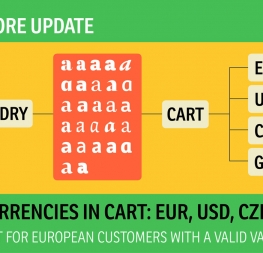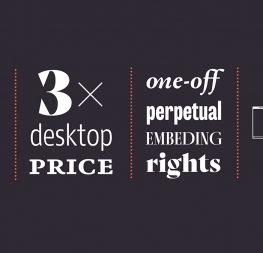Thinking of the World Wide Web functioning with only eight web-safe fonts is like thinking of black and white TV: It seems like ancient history. But it was only in 2008 that webfonts appeared and browsers started to slowly support them. Now, just 10 years later, it is hard to imagine the Internet without webfonts. For the delight of font developers, graphic designers, and for readers mostly, webfonts are here to stay.
In retrospect, it was probably unavoidable that this new technology would require the typography market to apply different commercial models, and that the (not so) old digital font EULAs would not be a good match for them. It has become rather challenging for type users to understand the differences between these commercial models and how best to compare them to make the right choice. This short article will help you understand the different licenses and how to make the best choice for your needs, whether large or small.
Let’s start with the most basic thing: How are webfonts different from desktop fonts? Well, webfonts are only meant to be used in a web environment with the help of a little tag of CSS code usually referred to as @font-face. Webfonts cannot be installed on a desktop computer or used in desktop apps such as InDesign®, Apple’s Pages®, or MS Word®. They are interpreted and rendered with the help of browsers or other apps dedicated to showing Internet content.
The key point is that webfonts are installed on a web server and not on your personal computer. And this is, in part, the reason why using traditional licenses based on the number of CPU installs don’t make sense.
Given that the Internet is connected, webfonts do not have to reside on the same server as the website using them. There are basically two possibilities to access webfonts. They can be self-hosted, which implies that the fonts are hosted on the licensee’s server (self-hosted webfonts), or they can be hosted externally by a service provider and served to the website requesting them.
There are two more factors we need to consider: the number of URLs using the font and how many times the font is loaded into a browser. The first figure is quite easy. Once a webfont resides on a server it can be served to many domain names (www.domain1.com, www.domain2.co.uk, etc.). Most font distributors charge a license fee per domain. This means, for example, that an advertising agency cannot use a single webfont license to serve different clients and their domains with the same font.
The second figure is measured in pageviews or unique visitors. A pageview is a request to load a single page on a website, and therefore indicates the times that a font is served. In commercial terms this is interesting because for the first time in digital font history we are able to measure how many times fonts are used and charge accordingly.


